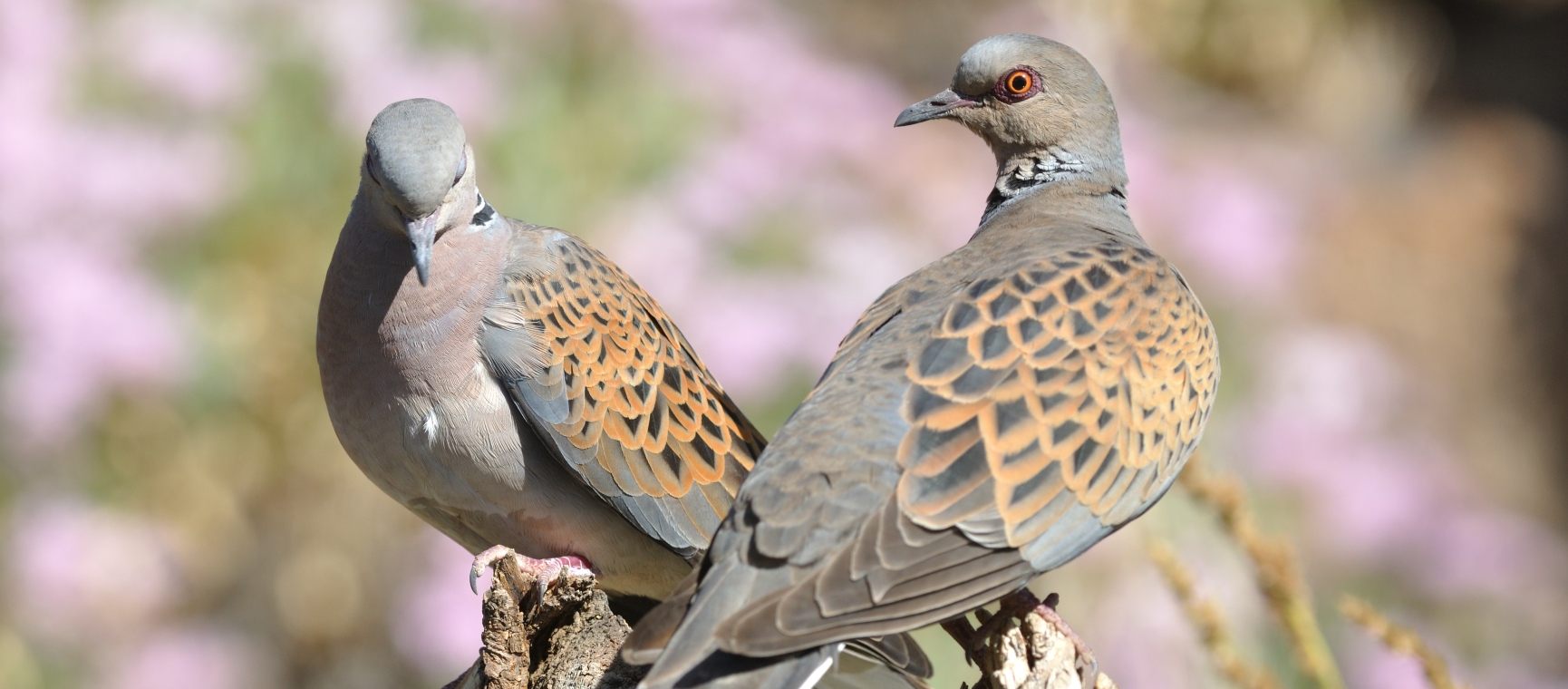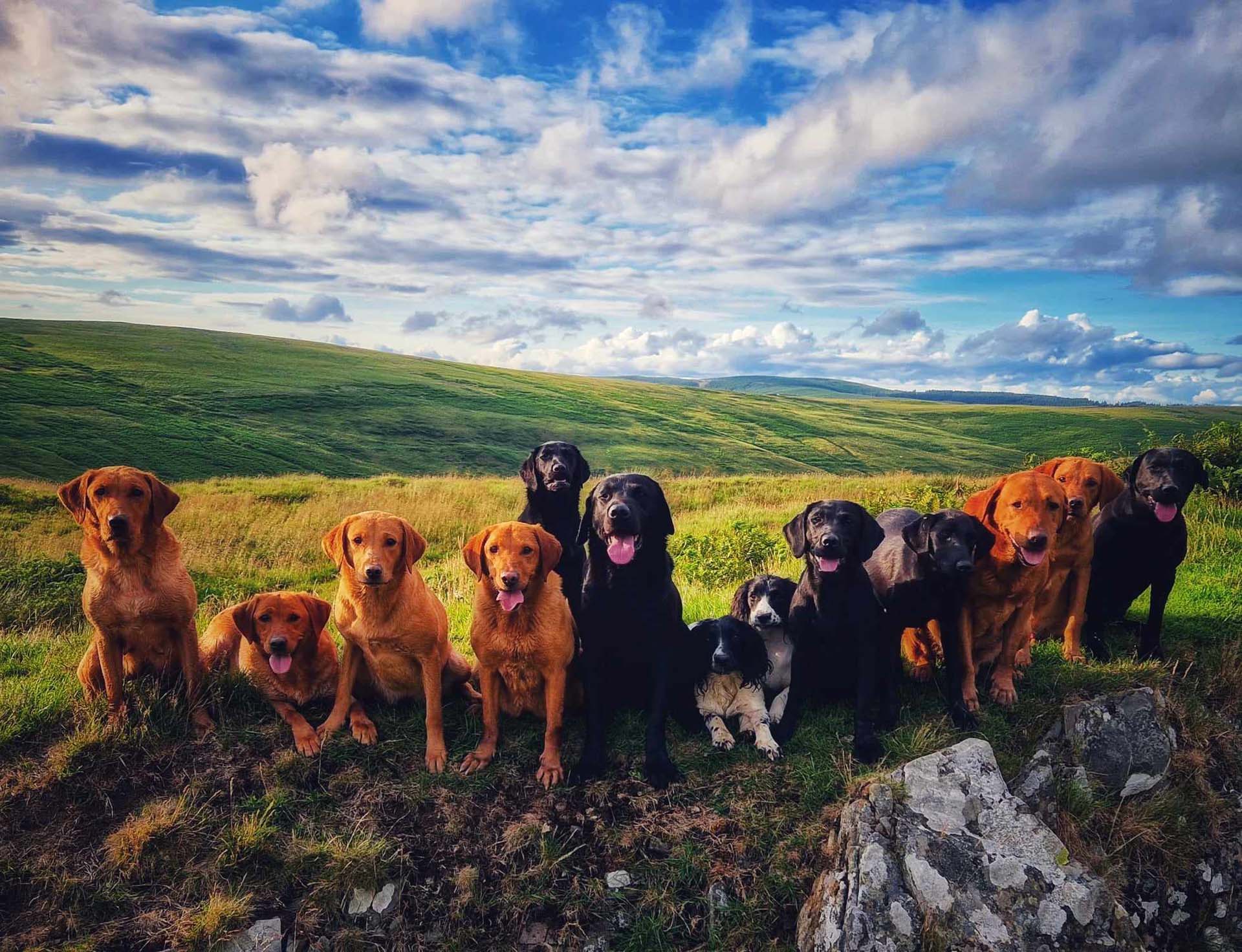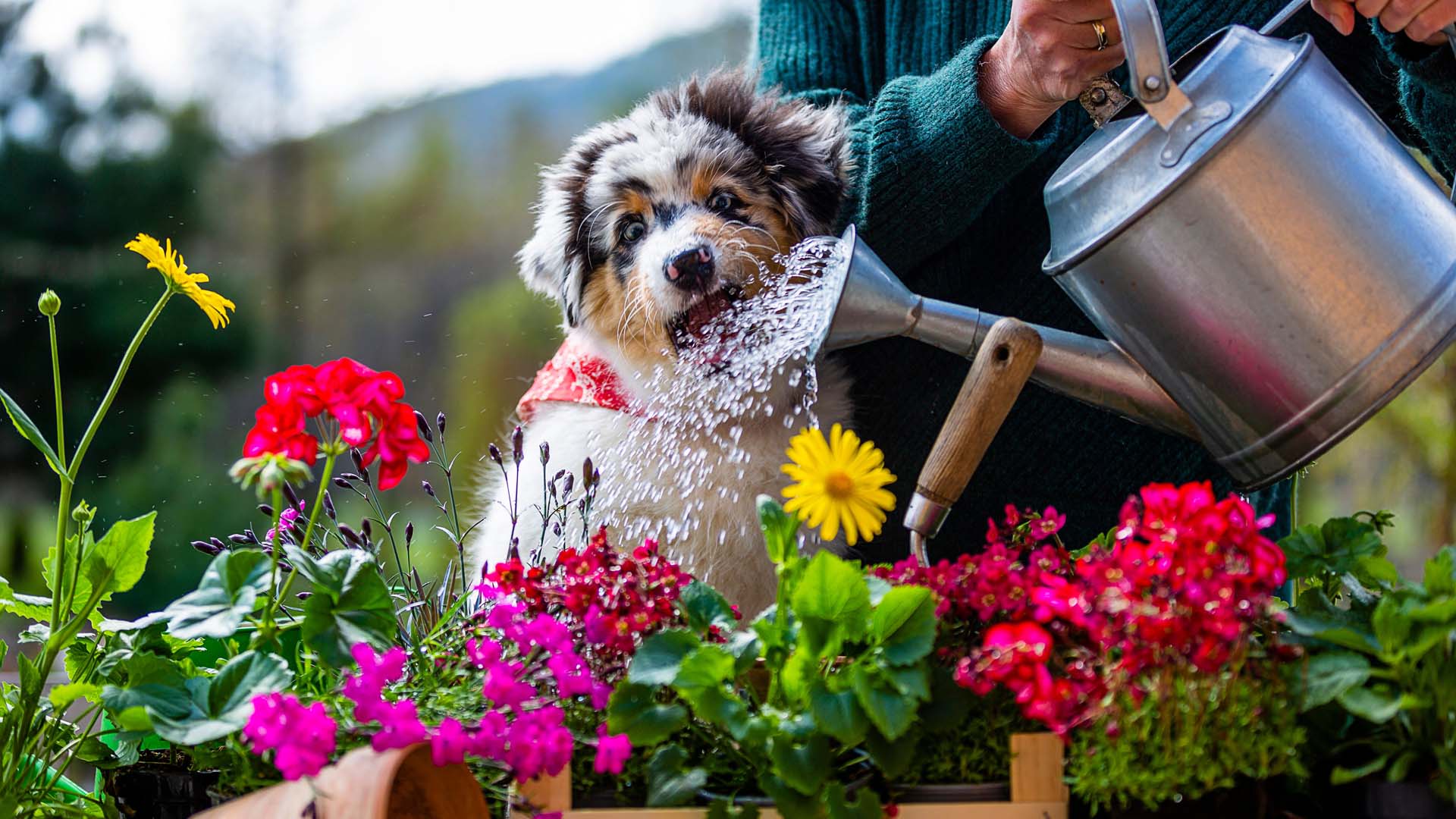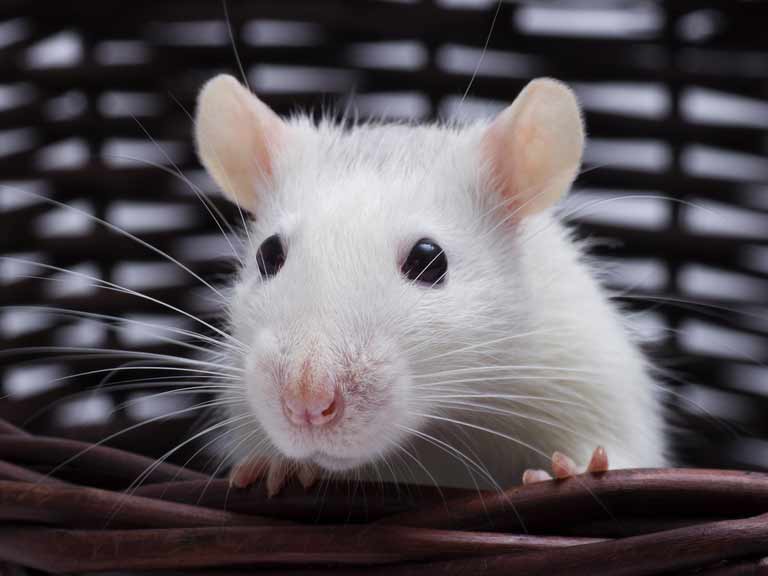Saving Britain's turtle doves
The turtle dove is Britain’s fastest declining bird. Now conservationists, including a team of older volunteers, are helping to turn the tide.

The turtle dove is Britain’s fastest declining bird. Now conservationists, including a team of older volunteers, are helping to turn the tide.

Last July, Paul Andrew went to a small farm in Cambridgeshire to retrieve a camera he had set up a week before. “I was trembling with excitement,” says Paul, 63, a biology teacher. Once home, he had hundreds of photos to look through.
“Click, nothing. Click, nothing. Oh, there’s a finch. Oh, there’s a crow.” Then, all of a sudden, he found what he was hoping for: a turtle dove, with its delicate colours, tortoiseshell back and striped neck.
“I nearly fell off my chair,” says Paul. Despite being a keen birdwatcher since the age of five, he hadn’t seen a turtle dove for years.
The dainty and enigmatic species is Britain’s only migratory dove, arriving in April to nest before flying over 3,000 miles to West Africa for the winter. It is believed they mate for life, with turtle doves embedded in our cultural heritage as a symbol of love and fidelity – they make more than 60 appearances across 22 of Shakespeare’s plays, and ‘turtle dove’ means ‘love’ in cockney rhyming slang.
In December, many of us pay tribute to the species in spirited renditions of The Twelve Days of Christmas, where ‘two turtle doves’ are included within the catalogue of gifts from the narrator’s lover.
In truth, their devotion is exaggerated: turtle doves are not always strictly monogamous, but are still considered one of our most romantic birds.
It is troubling, then, that numbers in the UK have plummeted by more than 98% since 1970, when there were around 125,000 pairs.
Only an estimated 2,100 breeding pairs are left, concentrated in eastern and southeastern areas, making it Britain’s fastest declining bird species.

For years, the turtle dove has been considered a ‘bird on the brink’, facing global extinction – it has been on the UK’s Red List (the highest conservation priority) since 1996.
Now, though, its fortunes are looking up, helped along by a flock of over-50s volunteers like Paul. He got involved with conservation efforts – named Operation Turtle Dove – this year, volunteering to visit two farms to document activity.
“Their purring song epitomises a summer evening,” he says. “But people aren’t hearing it any more.”
Led by the RSPB, Operation Turtle Dove was established in 2012 to investigate and address the bird’s decline. Its rapid disappearance is thought to have been caused by a loss of suitable habitat in the UK, coupled with unsustainable levels of hunting on their migratory flyways.
“Farming practices intensified, mainly because of changes to agricultural policy,” explains the scheme’s senior project manager, Rick Bayne.
“Habitats liked by turtle doves –which tend to be scrappy, scruffy and not particularly productive – were gradually lost throughout the Eighties and Nineties.”
Meanwhile, around one million birds were being shot down in southwest Europe each year as they journeyed to Africa. Together, this created a perfect storm for turtle doves, leading to a crash in numbers. But in 2021, a hunting ban was introduced in France, Spain and Portugal.
Within just two years, the population in Western Europe had increased by 25%.
“There’s likely to be a ripple effect, so we won’t see the impact in the UK until later,” says Rick. “But we’re certain it’s coming.”
To prepare, the project is working with farmers to get the UK ‘turtle-dove ready’.
“When birds return from Africa each spring, they’re tired,” says Rick. “We want them to get back into breeding condition as quickly as possible.”
This means providing farmers with high-quality seed, helping them create feeding and nesting habitat, and ensuring there is a water supply nearby. Arable field margins are perfect for feeding, while turtle doves need dense, thorny hedgerows for nesting.
Farmers are enthusiastic, no longer deterred by hunting levels, which risked undermining any efforts to make the UK more hospitable.
“We feel like we’re turning a corner now,” says Rick. “We’ve shifted the narrative. Losing the turtle dove isn’t inevitable.”

This is good news for those who favour the bird – for its beauty, personality, and evocative call.
“They are absolutely stunning,” says Paul. “I can’t think of a prettier farmland bird.” They are made even more arresting by their elusiveness.
“If you walk past a wood pigeon, it will just look at you, unbothered,” says Paul. “But you can’t get near turtle doves. They’re so flighty. They flash past before my binoculars have reached my eyes.”
Such timidity can be misleading, however.
“I like that they’re subtle and hidden,” says Rick. “But then you’ll come across images of what you think is a furtive, quiet little bird. You see them strut across seed sites, fight off wood pigeons that are double their size, and realise they’re feisty. They’ve got this oomph about them, even though they seem to be shy and retiring.”
And though difficult to spot, their call alone can be captivating.
“Most distinctive is their beautiful song, a purring coo,” says Rick. “This is more familiar to older generations, conjuring up nostalgia for the seventies, when it was much more common to hear them in the countryside.”
Turtle doves may be valued for their charisma, but their decline is also a symptom of a broader problem that needs confronting.
"They’re the canary in the coal mine,” says Rick. “If turtle doves are struggling, it’s a sign that something is not right with the farmed environment, that nature got left behind.” All farmland birds have declined by around 60% since 1970.
“If we tackle the issues that affect turtle doves, we’re also addressing factors that affect other important wildlife that breed in similar habits, like yellowhammers and nightingales.”
To this end, this year, Operation Turtle Dove worked with 442 farms and holdings, providing 161 hectares (225 football pitches) of foraging habitat. It also saw the highest number yet of farmers, landowners and volunteers involved.
All this work is building up to the next national turtle dove survey, due in 2026 or 2027, which will hopefully reveal an increase in population. In the meantime, 103 volunteers assist with tasks such as surveying farms and creating habitat. And they get plenty in return.
Based on what he captured on camera across two farms in the summer, Paul recorded how many turtle doves there were, what they were doing – feeding, fighting, mating – and if they were adults or young. He also noted any other wildlife pictured: barn owls, buzzards, hares.

Volunteering has reinvigorated his teaching.
“It gives me hope,” he says. “It shows that people working together in thoughtful ways can make a difference. The population has stabilised and that’s incredibly exciting. It gives me such a buzz.”
Carolyn Maxwell, 71, is another volunteer. Despite working for the RSPB for 11 years, she had never seen a turtle dove. Now retired from a career in environmental education, she signed up to the project after her husband died last year.
“I was beginning to moulder at home on my own,” she says. “I wanted to get back outside and do something practical.” She works on farms near her home in Cambridgeshire to provide habitat for foraging: removing unsuitable plants, clearing dead vegetation, and identifying and recording the plants growing there.
While volunteering this summer, Carolyn finally saw a turtle dove, perched on a wire. “I managed to see it through binoculars but didn’t hear it,” she says.
“It was amazing. You hear dire stories: that there’s no habitat, that they’ve all but disappeared from Britain. So, to see one was really heartening. It makes you feel your work is worthwhile.”
On another occasion, she caught a glimpse of tail feathers as one ducked under a hedge. Her volunteering scheme is set to last for three years – she hopes she might get to hear their call within this timeframe.
Matt Turner, 52, surveyed two Essex farms this summer, motivated by childhood memories. He remembers a patch of woodland at the bottom of his garden where he’d regularly encounter turtle doves when growing up.
“It would be sad if future generations didn’t get to see or hear them,” says Matt, who works in retail. He was particularly excited to document eight on one farm, including three flying together, indicating a probable family group.
“That’s a good sign there’s successful breeding down there,” he says.
Matt’s always excited to see a turtle dove. “Then a sadness kicks in,” he says. “You think, ‘Why am I so overjoyed? They should be everywhere’.”
Give to the RSPB appeal between 3–10 December and the Big Give Christmas Challenge will match your donation.
Rebecca Norris is Features Writer at Saga Magazine, interviewing fascinating people over 50, from DIY hot air balloon builders to the new generation of lighthouse keepers. She trained in news and features writing at City, University of London, graduating with an MA in Magazine Journalism.
View author page
While iPhones for pooches are a way off, there’s plenty of dog tech you can still invest in.




